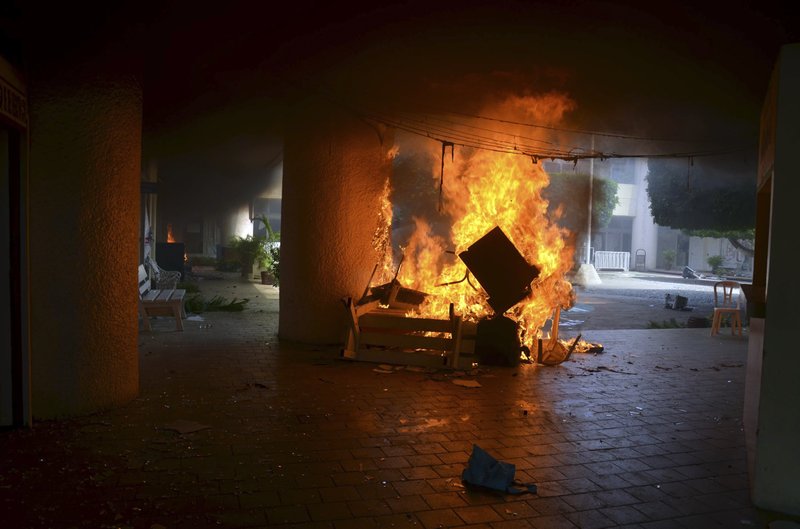MEXICO CITY -- Officials said Wednesday that a drug gang implicated in the disappearance of 43 students in a southern Mexico city essentially ran the town, paying the mayor hundreds of thousands of dollars a month out of its profits from making opium paste to fuel the U.S. heroin market.
The statements painted the fullest picture yet of the control that is exercised by gangs over a broad swath of Mexico's hot lands in Guerrero state.
The Guerreros Unidos cartel's deep connections with officials in the city of Iguala came to a head Sept. 26 when the mayor ordered municipal police to detain protesting students, who were then turned over to the drug gang, federal officials have said.
Since then, Mexican authorities have been searching for the students, spurred on by increasingly violent demonstrations that included the burning of Iguala's City Hall by protesters Wednesday.
Mexico Attorney General Jesus Murillo Karam said Wednesday that investigators had found nine mass graves containing 30 sets of human remains during the hunt for the missing students. He said officials were waiting for a second round of DNA tests after the first round determined they weren't the bodies of the students.
While the students remain missing, Murillo Karam said the arrests of Iguala police officers and the leader of the Guerreros Unidos gang, Sidronio Casarrubias, had provided more evidence about the events leading up to their disappearance.
Murillo Karam said the students, who attended a rural teachers college, had gained the enmity of Iguala Mayor Jose Luis Abarca because of a previous demonstration in the city. He said Abarca ordered police to detain students who hijacked four buses because the mayor thought they were going to try to disrupt a speech by his wife, Maria de los Angeles Pineda.
Abarca, his wife and the Iguala police chief are all fugitives. A total of 52 people, including police officers, Iguala officials and gang members, have been arrested in the case.
Authorities had previously reported that the mayor's wife, Pineda, had family ties to Guerreros Unidos. But Murillo Karam said it was much more than that, reporting that Casarrubias, the arrested drug gang leader, said she was "the main operator of criminal activities" in Iguala.
Casarrubias also said the mayor had gotten payments of $150,000-$220,000 every few weeks as a bribe and to pay off his corrupt police force.
After Iguala police picked up the students, Murillo Karam said, the youths were taken to a police station and then to the nearby town of Cocula. At some point they were loaded aboard a dump truck and taken to an area on the outskirts of Iguala where the mass graves have been found, he said.
At that point, Casarrubias told authorities, one of his lieutenants told him the students were members or sympathizers of a rival gang, the attorney general said.
Guerreros Unidos had sufficient money to bribe the mayor and the local police force because they have increasingly turned to the lucrative practice of growing opium poppies and sending opium paste to be refined for heroin destined for the U.S. market, another federal official said Wednesday.
The official, who is familiar with the case but requested anonymity because he is not authorized to be speak to the media, said Guerreros Unidos started turning more to opium after income from marijuana trafficking dropped, apparently because of legalization of the drug in some U.S. states.
A Section on 10/23/2014
